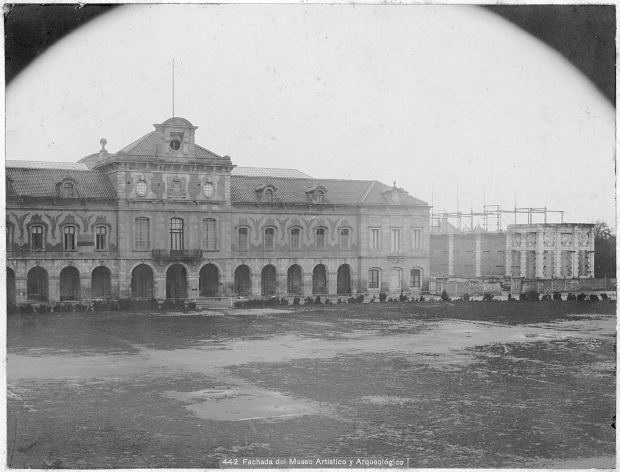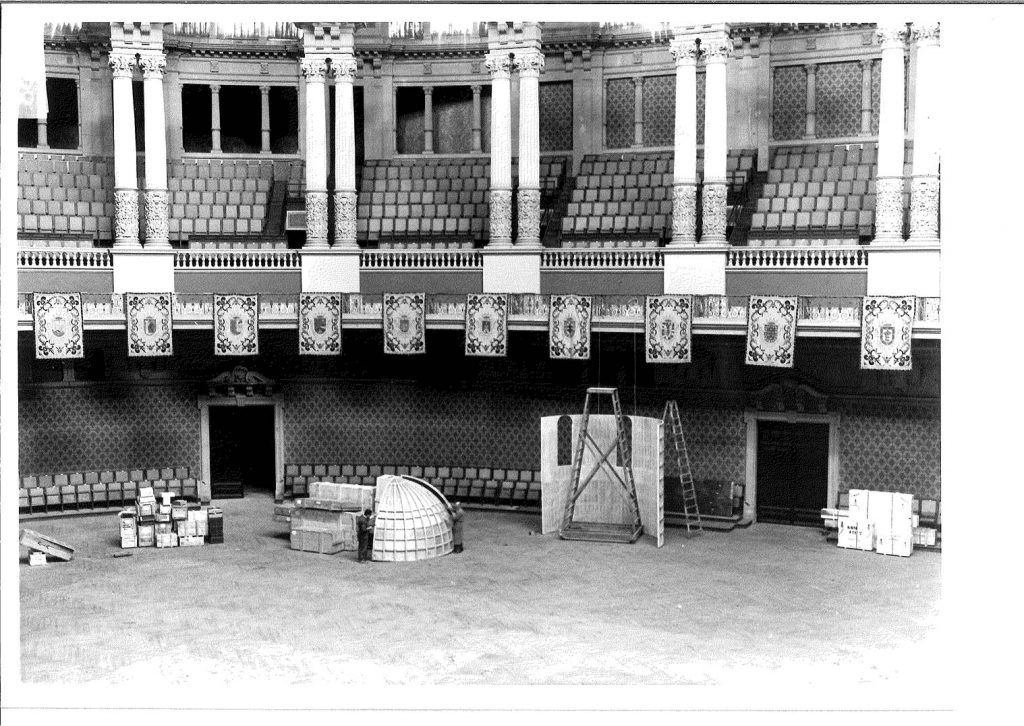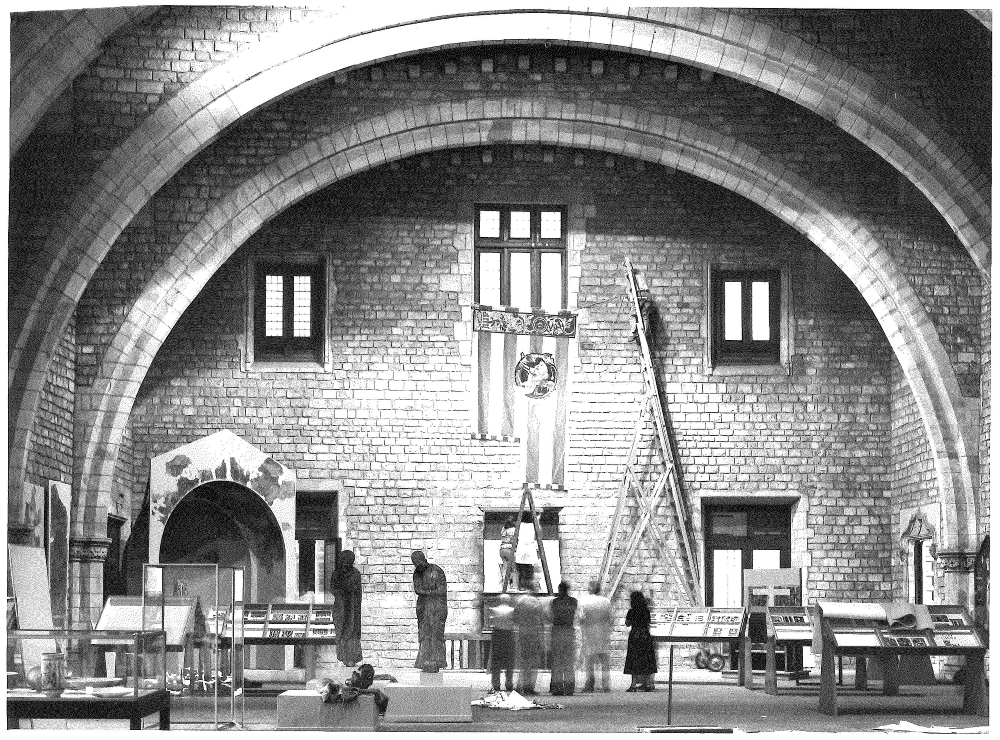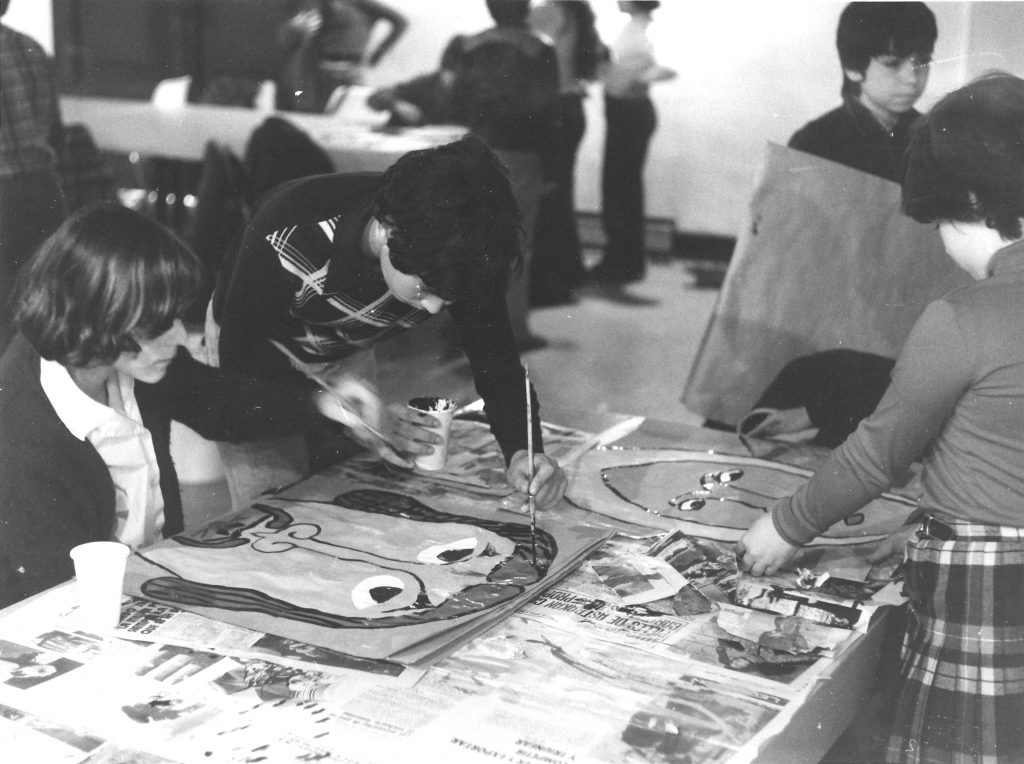Reme Barbero
PNEUMOTHORAX A perforation in the lung-archive of the Museu Nacional is a proposal of reflection of the artist and educator Ferreiro. It was born from his incursion in two of the art archives of the museum: the one of the Museu d’Art de Catalunya (MAC) and of the Museu d’Art Modern (MAM). These archives from two of the predecessor institutions of the current museum help us to understand the origins and the history of the collections of the Museu Nacional. The artistic intervention can be visited in the Space educArt, a space of dialogue between contemporary creation and the museum. The artist uses the metaphor of the pneumothorax to explain his research/perforation in the lung deposit of the archive, where documentation is stored pending processing. Based on the installation a whole series of “leaks” are proposed, such as visits, actions, tours and an exhibition of documents in the Library’s display cabinets.
The archives of the MAC and of the MAM: a bit of history
When the International Exposition of 1929 finished, Barcelona City Council transferred to the Board of Museums some of the buildings that had been expressly built for the Exposition. The Catalan art collections of the Museum of Art and Archaeology and the art collections from the 19th and 20th centuries of the Museum of Fine Arts were moved to the Palau Nacional, where part of the collection of the Provincial Museum of Antiquities was also deposited.

The proximity of the Palau Nacional to strategic military targets during the Civil War obliged the art works to be moved to Olot. With the War over, the works returned to Barcelona. The collections from Romanesque until the 18th century returned to the Palau Nacional, and the painting and sculpture collections of the 19th and 20th centuries were installed in the Palau de la Ciutadella, where in 1945 the new Museu d’Art Modern was inaugurated.

In 1990, the Parlament de Catalunya approved the Museums Law, as a result of which the Museu Nacional d’Art de Catalunya was created. This gathered together under the same roof, the Palau Nacional, the collections of the Museu d’Art de Catalunya, the Museu d’Art Modern, the Gabinet Numismàtic de Catalunya, the Cabinet of Drawings and Prints (created in 1989) and the General Library of Art History. On 16th December 2004, the Museu Nacional d’Art de Catalunya was inaugurated with all its sections open.
The Museum Archive, created in 1995, initiated a project of documentary management, the aim of which being to recuperate and make accessible all the information available of the collections and activities of the museum.
The documentation of the MAM and of the MAC reached the Archive in a partial and dispersed way, without normalized references. The files were not the result of the procedure related to any activity; they were informative dossiers that gathered together all types of information: original documents, press cuttings, photographs, copies, etc. They even followed diverse classification criteria. When the Museum Archive took on the responsibility for this documentation, technical criteria were applied and suitable tools were created so as to ensure the conservation of this documentary collection and to facilitate the consultation by the researchers, both internal and external.
The organisation of the documents
From the beginning, these two archives applied the current classification chart of the museum, which groups and encodes all activities hierarchically. The classification chart consists of eleven entries, which correspond to the functions of the museum.
Relevance of the collection in the cultural and artistic history of the country
Delving into the collection of these archives means getting to know the projects and experiences of the predecessor institutions of the Museu Nacional d’Art de Catalunya and of its collections. Here is a brief overview of what can be found.
The archive of art of the MAC
The collection of the MAC gathers together documentation from 1955 to 1991, mostly textual documents in paper format.
- The exhibition files: Romanesque art, from 1961, in the archive
There are exhibition files. It is worth highlighting the organisation of the exhibition Romanesque art, which was carried out simultaneously in Barcelona and Santiago de Compostella in 1961. It made known internationally the wealth and diversity of Catalan Romanesque art. Organised by the Spanish state, and under the auspices of the Council of Europe, there were works from all over Europe and from American museums. It filled 31 rooms of the Museu d’Art de Catalunya, spread over two floors, it allowed the museum’s collection to become known. The mural paintings of Catalan, Italian and French Romanesque, as well as manuscripts and artworks from the rest of Europe deserve a chapter apart.
According to the press of the time, it was the most important cultural event of the year and received more than 100,000 visitors during the two months that it was open to the public.
The file contains the economic, administrative and staff management of the exhibition. We can also find there documentation of the preparatory meetings, the setting up of the rooms, correspondence or transport of the works. The most numerous part corresponds to the information sheets of the works that were included in the exhibition.

- Documents of cultural and educational action: “Picasso at school”, a pioneering educational experience
An important part of the collection is taken up by the documentation related to cultural and educational action. This includes everything from educational programmes to didactic material, reports, statistics or visitor surveys. Educational experiences are also collected, such as “Picasso at school”. Barcelona City Council, among the commemorative activities for the celebration of the birth of Pablo Picasso held in 1981, organized an exhibition which was presented in different schools, accompanied by complementary material.
And all this documentation has been the basis for the artistic work by J. Ferreiro in Pneumothorax: educational projects that are carried out in different museums of the city, such as the Museu de Geologia, the Museu Picasso, the Museu de la Ceràmica, the Museu de Zoologia and the Museu d’Arts Decoratives.
- Documents of management of museum heritage: the file of the Bertrand Collection or the ones of Barcelona restores, two paradigmatic examples
Another function of the MAC that can be seen reflected in the documentation, is the management of the museum heritage: loans for exhibitions, inclusion of artworks, acquisitions, deposits, donations, legacies, offers, etc. The file of the installation of the Bertrand Collection, for example, shows us the plans, the budgets, and the layout of the pieces in the museum’s rooms.
The art archive also counts on an important number of files of intervention in heritage, works from outside the museum that the Restoration Service then intervened in. This is the case of the works which were incorporated in the restoration workshop on the occasion of the exhibition Barcelona Restores, organized by Barcelona City Council, and held in the Saló del Tinell in 1980. Works of art were exhibited from the 2nd to the 20th centuries from the Museus Municipals d’Art, restored by the Restoration Service.

The art archive of the MAM
The documentation of the Museu d’Art Modern, which covers the period from 1945 to 1990, is also mainly made up of textual documentation, and includes press clippings, pamphlets and photographs, which document the files.
Through this documentation, we can delve into the study and the trajectory of institutions which have now disappeared and also of relevant cultural events. An example is the documentation that remains of the disappeared Museu Clarà, from the period in which it depended on the Museu d’Art Modern, from 1981 to 1990: the management of the economic resources and the personnel, and the problems of security, lack of surveillance and incidents in works of art.
This exhibition in 1969 fostered the revaluation of modernist decorative arts and promoted donations and acquisitions. The exhibition, which was inaugurated at the Casón del Buen Retiro in Madrid, was held in 1970 at the Museu d’Art Modern, under the supervision of Joan Ainaud, then general director of the art museums of Barcelona (1948 -1985), and Joan Barbeta, technical director of MAM since 1967.
On the occasion of the centenary of the death of Marià Fortuny, in 1974, the Museu d’Art Modern hosted a commemorative exhibition. This exhibition travelled also to Madrid and Reus. In the corresponding file, there are the lists of selected works, transport and assembly documentation, press cuttings, lists of lenders and documentation of the movement of works.
Also documented are the procedures that culminated with the donation to Barcelona City Council of a collection of sculptures, paintings, drawings and various objects by Juli González, Juan González, Concordio González and Roberta González.
Educational activities
Art archives, educational projects and the Pneumothorax
It is with these collections that Jordi Ferreriro has been able to recover documentation of the educational projects that the museums of Barcelona promoted and to bring them to light, thanks to the Pneumothorax project. These documents show us the pioneering role of Catalonia as a driving force in pedagogical renovation and the role of museums in this transformation.
Deepening in these archives is to know the projects and the experiences of the museum and its collections. It is also to know the role Barcelona’s museums already had in the field of education.
Tècnica de l'Arxiu del Museu Nacional d'Art de Catalunya









